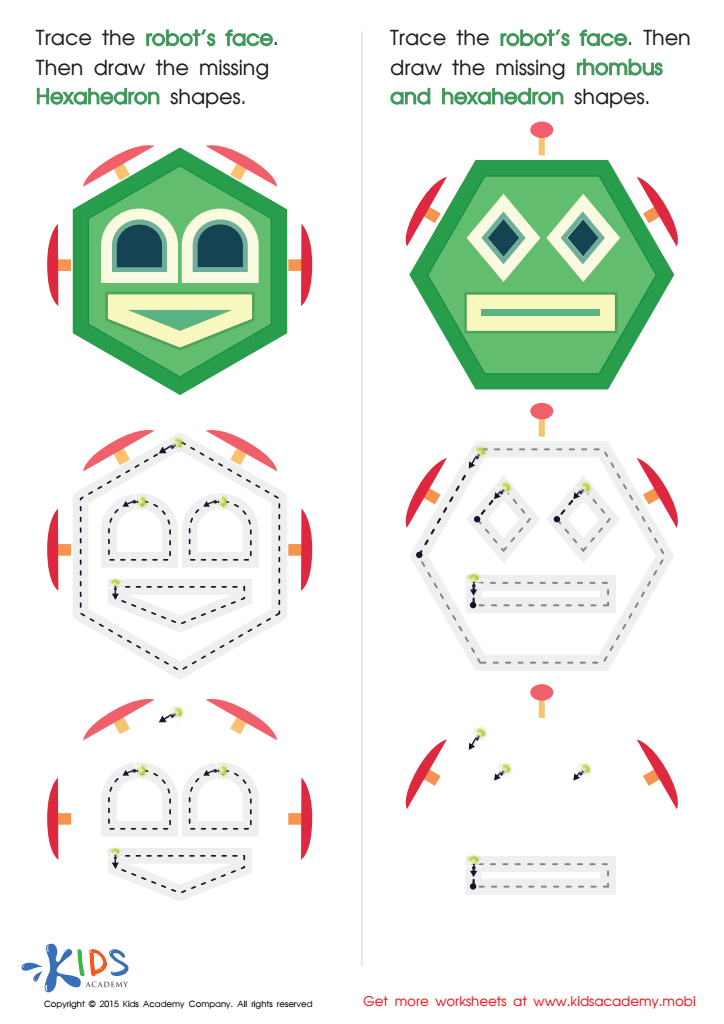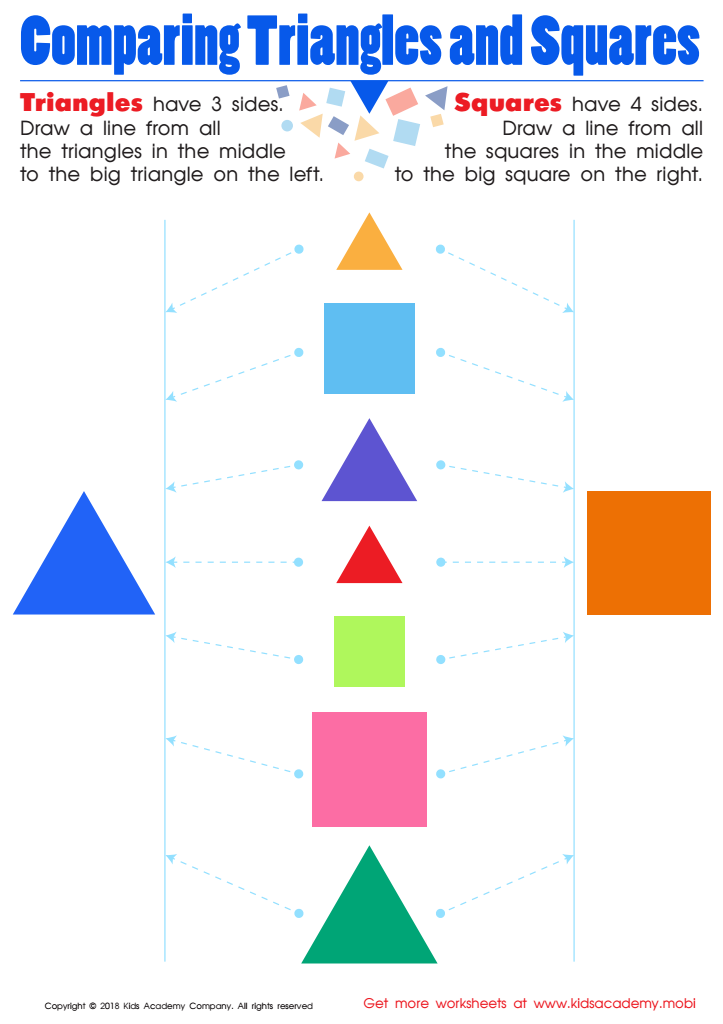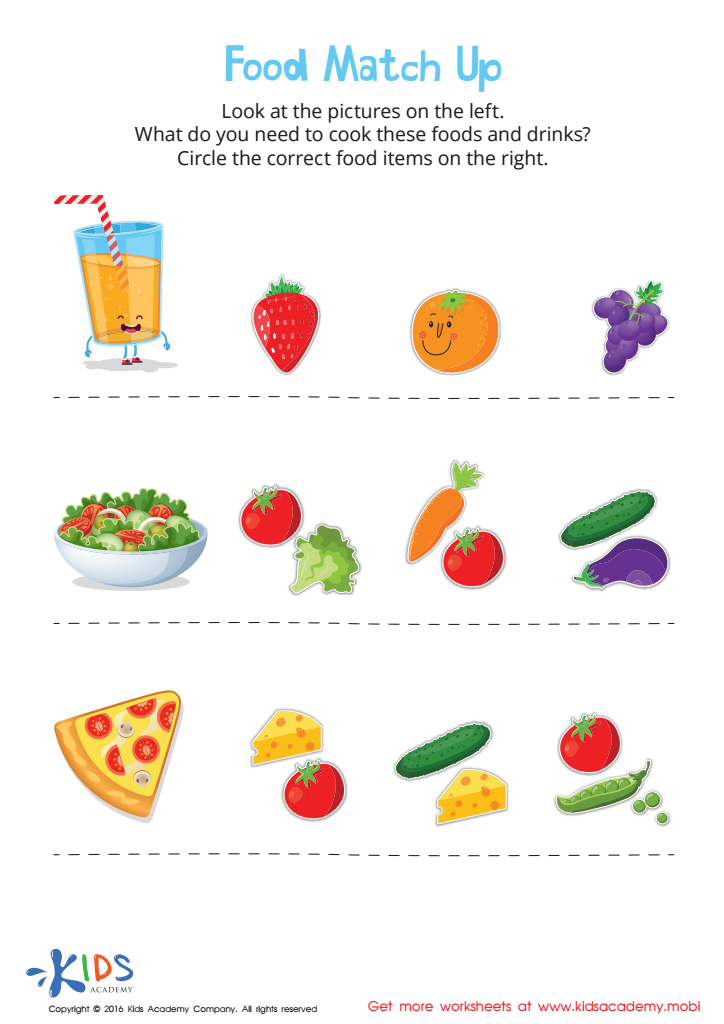Visual discrimination Normal Geometry Worksheets for 4-Year-Olds
3 filtered results
-
From - To
Introduce young learners to the exciting world of geometry with our Visual Discrimination Normal Geometry Worksheets tailored for 4-year-olds! These engaging activities help preschoolers recognize and differentiate between various shapes, patterns, and sizes, enhancing their visual perception and cognitive development. Designed with bright colors and playful illustrations, our worksheets make learning fun. Each exercise provides a hands-on approach to identifying geometrical figures, boosting confidence and foundational math skills. Perfect for at-home practice or classroom enrichment, these worksheets are a fantastic resource for parents and educators aiming to nurture a child's early interest in geometry.


Practice Drawing Hexahedrons And a Rhombus Worksheet


Comparing Triangles Squares Worksheet


Food Match Up Worksheet
Visual discrimination is the ability to detect differences and similarities in shapes, patterns, and colors. For 4-year-olds, fostering this skill is crucial as it lays the groundwork for higher cognitive processes related to reading, math, and problem-solving. Parents and teachers must prioritize visual discrimination, especially in the realm of normal geometry, for several compelling reasons.
First, geometric shapes are foundational for understanding more complex mathematical concepts. Recognizing circles, squares, triangles, and other shapes enhances spatial reasoning, an essential cognitive skill. Secondly, visual discrimination plays a key role in reading and writing. Differentiating between letters like 'b' and 'd' or 'p' and 'q' relies on the same skill set used to distinguish geometric shapes.
Moreover, visual discrimination activities boost fine motor skills. Tasks like drawing shapes, matching, sorting, or assembling puzzles require precision and control, improving a child’s hand-eye coordination and preparing them for writing. Lastly, these activities enhance attention to detail and analytical skills, aiding kids in making critical observations about the world around them.
For parents and teachers, focusing on these skills ensures that children develop into competent learners, ready to tackle the educational challenges ahead. Engaging children in playful, shape-oriented activities can significantly enhance their visual discrimination abilities, setting a strong foundation for future academic success.
 Assign to My Students
Assign to My Students















